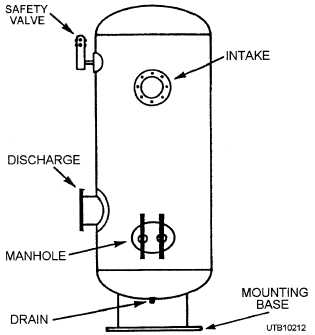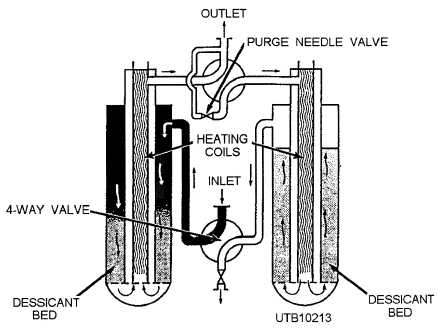
Figure 6-47. - Air receiver.
the unloading, and the governing devices are working properly.
Do NOT run a compressor faster than the speed recommended by the manufacturer.
Be sure that air at the compressor intake is cool and free from flammable gases, vapors, and dust.
Do NOT permit wood or other flammable material to remain in contact with the air discharge pipe.
Immediately secure a compressor when the temperature of the air discharge from any stage rises unduly or exceeds 400F.
Do NOT install a check valve or drop valve between the compressor and receiver unless a relief valve is also fitted between the compressor and the stop or check valve. (If the compressor is started against a closed valve or defective check valve, an explosion can result.)
Pressure gauges must be in working order unless you have to remove them for repair.
NEVER kink a hose to stop the air flow, and always keep clamps on the hose tight.
Keep compressor pipes and tanks clean to guard against an oil vapor explosion. Clean intake air filters periodically.
Turn off the motor before adjusting and repairing an air compressor.
Use only soapy water or another suitable nontoxic, nonflammable solution for cleaning compression intake filters, cylinders, or air passages. NEVER use benzene, kerosene, or other light oils to clean these portions of a system. These oils vaporize easily and form a highly explosive mixture under compression.
Know what compressors can do, realize they are dangerous, and then use them safely
Q22. What are the three types of air compressors?

Figure 6-48. - Flow diagram of an electric adsorption dryer.
Continue Reading